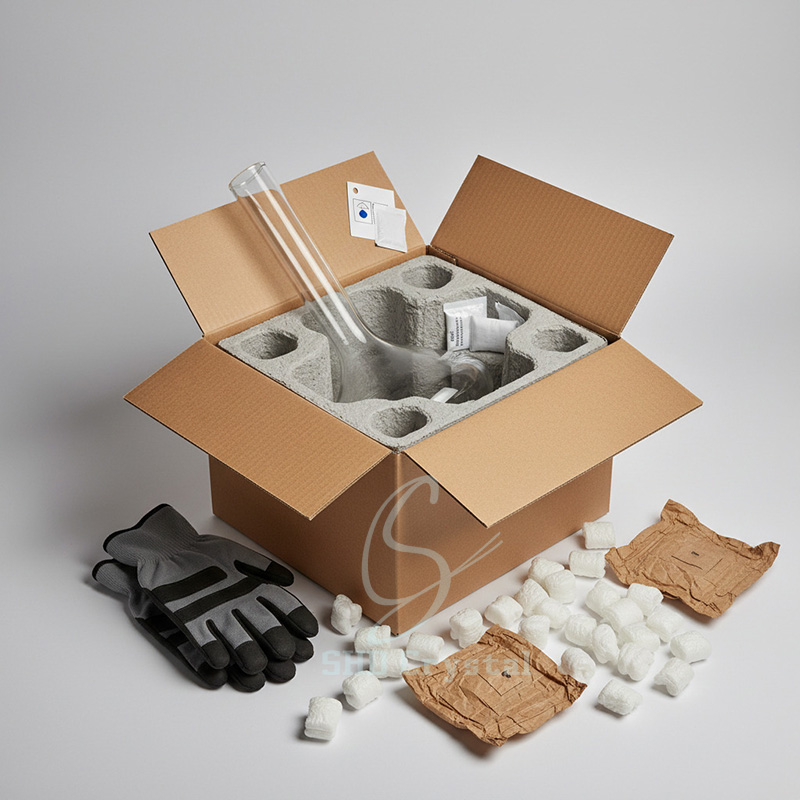> Blogs > Global Shipping Guidelines for Heavy Glass Hookah Base — Key Logistics Principles
Global Shipping Guidelines for Heavy Glass Hookah Base — Key Logistics Principles
Core keywords: heavy glass hookah base, fragile glass shipping, hookah glassware shipping
Logistics Requirements for Heavy Glass Hookah Base
As global demand for premium hookah equipment continues to expand, transporting delicate components—especially any heavy glass hookah base—remains a complex logistics challenge. Well-structured shipping guidelines help reduce breakage risk, improve documentation accuracy, and enhance the end-user experience. These guidelines draw on commonly accepted packaging practices, regulatory expectations, and sustainable logistics principles that apply broadly across fragile-goods transport.
Understanding the Global Logistics Requirements for Heavy Glass Hookah Base

Managing a heavy glass hookah base in international transit requires balancing fragility, weight concentration, and varying route conditions. The product’s density and structural sensitivity make it important to consider vibration, compression, and temperature fluctuations. These considerations align with general best practices used for fragile glass shipping, providing a foundation for the structural, regulatory, and operational guidance discussed in the following sections.
Structural Packaging Design
A heavy glass hookah base often experiences stress at the neck area, making targeted protection essential. Triple-wall corrugated cartons (44ECT or higher) combined with molded-pulp or EVA inserts help stabilize the base and reduce potential impact.
Humidity control inside the packaging can also help maintain overall packaging integrity during long transport cycles. These methods reflect widely adopted approaches for fragile glass shipping, ensuring a stable protective environment throughout distribution.
Labeling and Customs Documentation
Clear labeling helps avoid delays and reduces disputes during international handling. Shipments of a heavy glass hookah base typically benefit from “Fragile” and “This Side Up” markings placed on multiple cardboard surfaces.
Using accurate HS codes—such as 7013.49 for certain types of decorative glassware—and providing clear product descriptions support smoother customer interactions. Unified declarations for multi-item shipments help maintain consistency within broader fragile glass shipping workflows.
Testing and Verification
Packaging validation ensures that a heavy glass hookah base can withstand common transportation stresses. Many businesses utilize vibration, compression, or drop-testing procedures based on general packaging-performance standards.
While results vary depending on materials and test conditions, validated packaging helps organizations better anticipate risks and improve shipment reliability. These practices are widely recognized as beneficial across the fragile glass shipping sector.
Handling and Warehouse Safety
A meaningful portion of fragile-goods damage is linked to manual handling. Using padded grips, avoiding unpalletized stacking, and maintaining safe clearance zones can help minimize avoidable risks when managing a heavy glass hookah base.
In some facilities, mechanical assistance—such as vacuum lifting tools—is used to help reduce direct surface pressure and improve handling consistency.
Climate and Transport Route Control
Glass products can experience stress when exposed to rapid or extreme temperature changes. For a heavy glass hookah base, breathable liners or temperature-moderating solutions can help stabilize the environment during long-distance shipping.
Tools such as shock or humidity indicators provide visual insight into handling conditions, supporting better traceability during international movement.
Sustainable Materials and Regulatory Shifts
Global interest in environmentally responsible packaging continues to influence shipping practices. In many markets, recyclable materials or reduced-waste cushioning options—such as molded-pulp or starch-based inserts—are increasingly encouraged.
These alternatives offer protective performance for a heavy glass hookah base while supporting broader sustainability goals within supply chains.
Quality Control and Traceability
Traceability systems play an important role in modern logistics. Applying QR or RFID codes to cartons containing a heavy glass hookah base allows companies to record batch information, packaging checks, and inspection dates.
These records can support after-sales processes, internal audits, and overall supply-chain transparency.

Conclusion
Following structured shipping guidelines for a heavy glass hookah base helps organizations improve consistency, reduce risk, and support customer confidence. Through thoughtful packaging design, accurate labeling, environmental awareness, and traceability tools, companies can build more secure and responsible logistics systems that respond well to the demands of international distribution.
At SHD Crystal, our team combines practical glass-manufacturing knowledge with real-world logistics experience to develop protective and environmentally considerate packaging solutions for every heavy glass hookah base shipped worldwide.

- : info@shdcrystal.com
- : +86-755-2335 8353
- : No. 68 Shasong Road, Shajing Street, Bao'an District, Shenzhen, Guangdong Province
Follow us